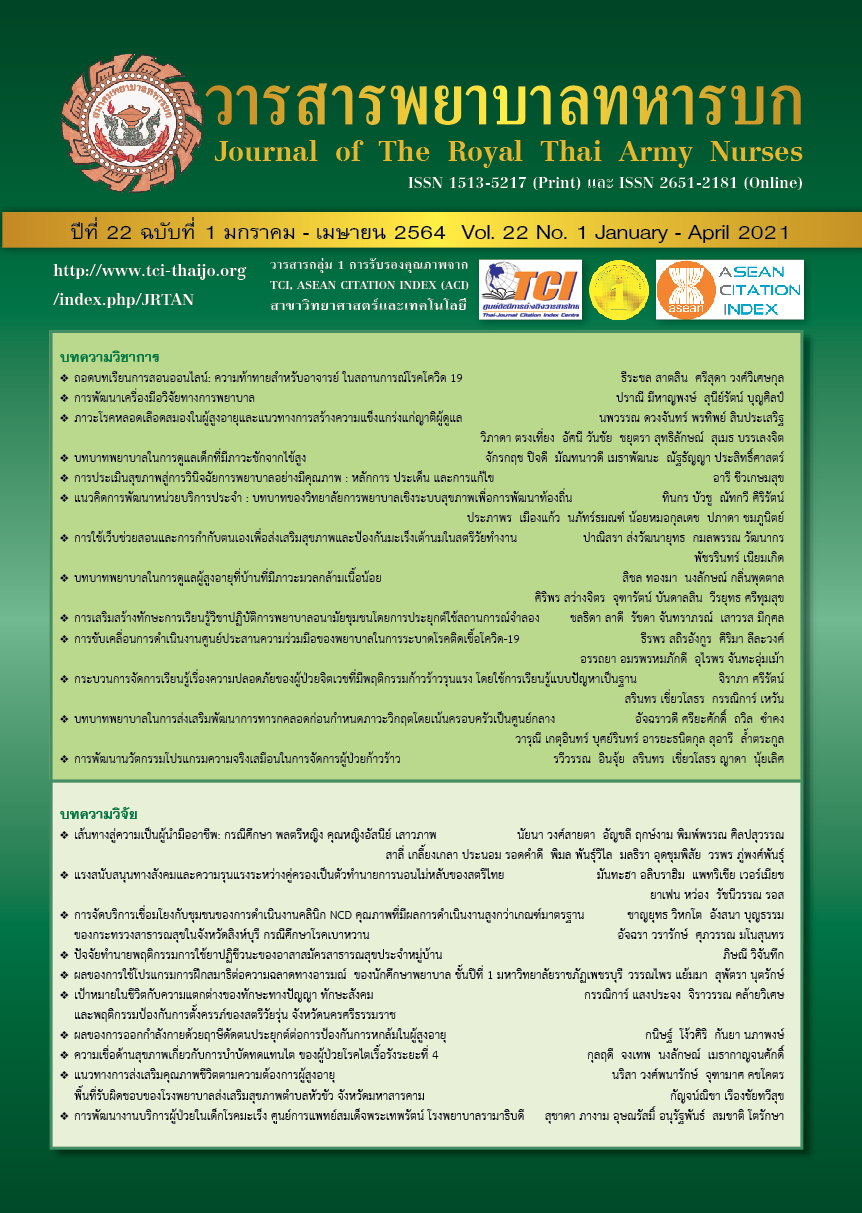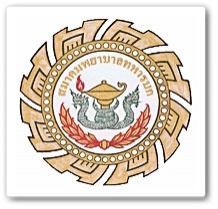Nurses’ Role in Newborn Development Focused on Family Centered-Care in NICU
Keywords:
Nurses’ role, Developmental care, preterm infant, family centered-careAbstract
Preterm infants who need intensive medical care are in an environment entirely different than the protective environment of the womb. As we strive to improve our morbidity and mortality rates, we are challenged to enhance the neuroprotective development of the neonate, paying particular in NICU environment. Nurses work close to the family and have a role to promote developmental care. The neonatal integrative developmental care model identifies seven distinct core measures that provide clinical guidance for NICU staff in delivering neuroprotective family-centered developmental care in the NICU as the following: as the 1) healing environment, 2) partnering with families, 3) positioning & handling, 4) safeguarding sleep, 5) minimizing stress and pain, 6) protecting skin, and 7) optimizing nutrition. This model helps to promote normal growth and development.
Downloads
References
Strategy and Planning Division, Ministry of Public Health. Public Health Statistics A.D. 2019. Nonthaburi, Strategy and Planning Division. (in Thai)
Hamilton B, Martin J, Osterman M, Curtin S, Mathews T. Births: final data for 2014. Natl Vital Stat Rep. 2015; 64(12):1-63.
Altimier, L., Phillips, R.M. The Neonatal Integrative Developmental Care Model: Advanced Clinical Applications of the Seven Core Measures for Neuroprotective Family-centered Developmental Care. Newborn & Infant Nursing Reviews. 2016; 16(1): 230-44.
Als H, Duffy FH, McAnulty GB, Rivkin MJ, Vajapeyam S, Mulkern RV, et al. Early experience alters brain function and structure. Pediatrics. 2004; 113: 846-57.
Baio J. Prevalence of autism spectrum disorders -autism and developmental disabilities monitoring network, 14 sites, United States, 2008. MMWR Surveill Summ. 2012;61:1-19.
Als, H. A synactive model of neonatal behavioral organization: Framework for the assessment of neurobehavioral development in the premature infant and for support of infants and parents in the neonatal intensive care environment. Physical & Occupational Therapy in Pediatrics. 1986; 6(3–4):3-53.
Valizadeh L, Asadollahi M, Mostafa Gharebaghi M, Gholami F. The congruence of nurses’ performance with developmental care standards in neonatal intensive care units. Journal of Caring Sciences. 2013; 2(1), 61-71.
American Nurses Association and Society of Pediatric Nurses. Scope and standards of pediatric Nursing practice. Washington, D.C: Author; 2003.
Lewandowski, LA.; Tesler, MD., editors. Family-centered care: Putting it into action: The SPN/ANA guide to family-centered care. Washington, D.C: American Nurses Association; 2003.
Coughlin M. Age-Appropriate Care of the Premature and Critically Ill Hospitalized Infant: NANN Guideline for Practice. Glenview, IL: National Association of Neonatal Nurses; 2011.
Deng Q, Li Q, Wang H, Sun H, Xu X. Early father-infant skin-to-skin contact and its effect on the neurodevelopmental outcomes of moderately preterm infants in China: study protocol for a randomized controlled trial. Trials. 2018; 19(1):1-11.
Homsombat P, Wittayasooporn J, Daramas T. The effect of kangaroo care on sleep duration in preterm infants. Rama Nurs J. 2020; 26(1): 31-45. (in Thai)
Inthayot C. Effect of guideline development to physiological, growth, and sleep pattern in preterm infant at NICU Lampang hospital. Journal of Phrae Public Health to Develop the System. 2019; 9(8): 57-64. (in Thai)
Stefana A, Lavelli M. Parental engagement and early interactions with preterm infants during the stay in the neonatal intensive care unit: protocol of a mixed-method and longitudinal study. BMJ Open. 2017; 7:e013824.
Phuangsriken S, Charoensaen J, Phalasri A. Effect of empowerment for mother and maternal role attainment in mother, maternal role satisfaction and body weight of premature infant. Mahasarakham Hospital Journal. 2018; 15(1):136-145. (in Thai)
Wiley F, Raphael R, Ghanouni P. NICU positioning strategies to reduce stress in preterm infants: a scoping review, Early Child Development and Care. 2019; 190 (14): 2309-2320.
Jarus T, Bloch L, Rabinovitch G, Sadeh A, Dolfin T, Litmanovitz I, Bart O. Effects of prone and supine positions on sleep state and stress responses in preterm infants. Infant Behavior and Development.2011; 34: 257-263.
Park J. Sleep Promotion for Preterm Infants in the NICU. Nurs Womens Health. 2020 Feb; 24(1): 24-35.
Grunau RE. Neonatal pain in very preterm infants: long-term effects on brain, neurodevelopment and pain reactivity. Rambam Maimonides Medical Journal. 2013; 4(4):e0025.
Thai association for the study of pain. Clinical guidance for pediatric acute pain management. Bangkok: Noppachai printing; 2018. (inThai)
Lardsena K, Siripul P, Lundqvist P. Evaluation of ALPS-Neo instrument for assessing pain in premature infants: A pilot study. Thai Journal of Nursing and Midwifery Practice. 2018; 5(2): 85-95. (in Thai)
Jurica SN, Čolić A, Gverić-Ahmetašević S, Lončarević D, Filipović-Grčić B, Stipanović-Kastelić J, Rešić A. Skin of the very premature newborn-physiology and care Paediatria Croatica. 2016; 60 (2): 21-6.
Curley MAQ, Rasmus IS, Roberts KE, Wypij D. Predicting pressure ulcer risk in pediatric patients: the Braden Qscale. Nursing Research. 2003; 52: 22–33.
Niemsang S. Effectiveness of a mother’s preterm birth weight preparation program on breastfeeding behaviors in nusery, Udonthani hospital. 2018; 26(2): 127-136.(in Thai)
Hay WW. Optimizing nutrition of the preterm infant. Zhongguo Dang Dai Er Ke Za Zhi. 2017; 19(1):1-21.
Wongphinit U, Sinsuksai N, Yusamran C. Personal factors, social support and effective suckling at discharge in predicting exclusive breastfeeding at one month among first-time mothers. Journal of The Royal Thai Army Nurses. 2016; 17(1): 88-95. (in Thai)
Downloads
Published
How to Cite
Issue
Section
License
บทความหรือข้อคิดเห็นใดใดที่ปรากฏในวารสารพยาบาลทหารบกเป็นวรรณกรรมของผู้เขียน ซึ่งบรรณาธิการหรือสมาคมพยาบาลทหารบก ไม่จำเป็นต้องเห็นด้วย
บทความที่ได้รับการตีพิมพ์เป็นลิขสิทธิ์ของวารสารพยาบาลทหารบก
The ideas and opinions expressed in the Journal of The Royal Thai Army Nurses are those of the authors and not necessarily those
of the editor or Royal Thai Army Nurses Association.






